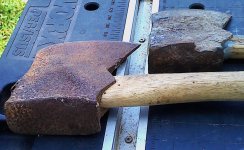PedalUma
Well-Known Member
- Region
- USA
- City
- Petaluma, CA
Well, I did it. I just made a bike with a torque sensor and a throttle. Throttles are very rare for me. I was also able to reset that bike to show bars on the display that match the battery. In the Summer around here we get high winds in the afternoon. The Ocean temp is 65 and inland it is 110. That hot air rises and it sucks in the cold air through the Petaluma Gap. Then it flows down valleys. That is why that guy had 30 mph headwinds. He had a habit of running batteries into the ground and wrecked them. I helped him put in a warranty claim. But really, you can't do that to batteries. We have a place called Sonoma Mountain. In the Summer you can catch tailwinds in two directions if you do a lap of the mountain counter clockwise.


